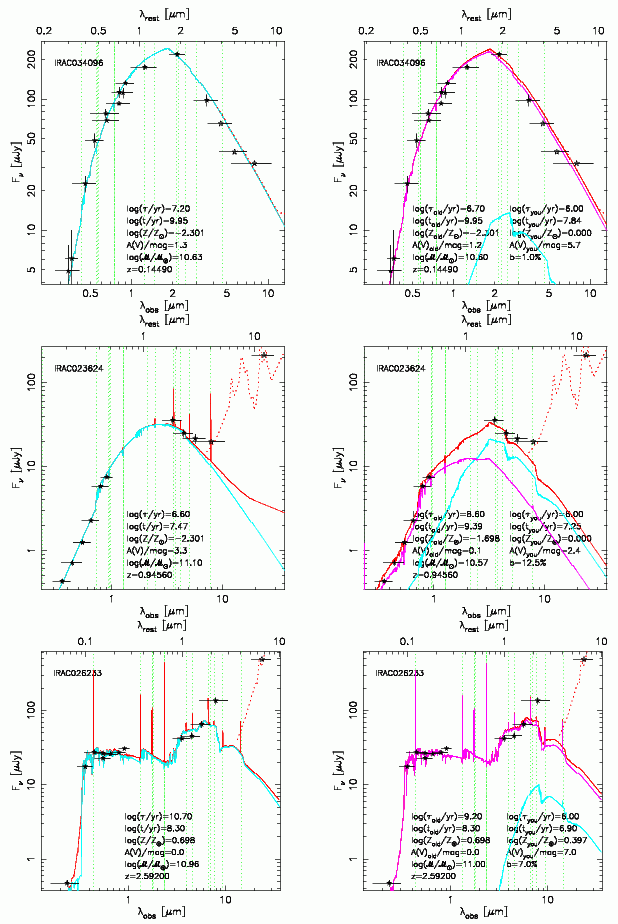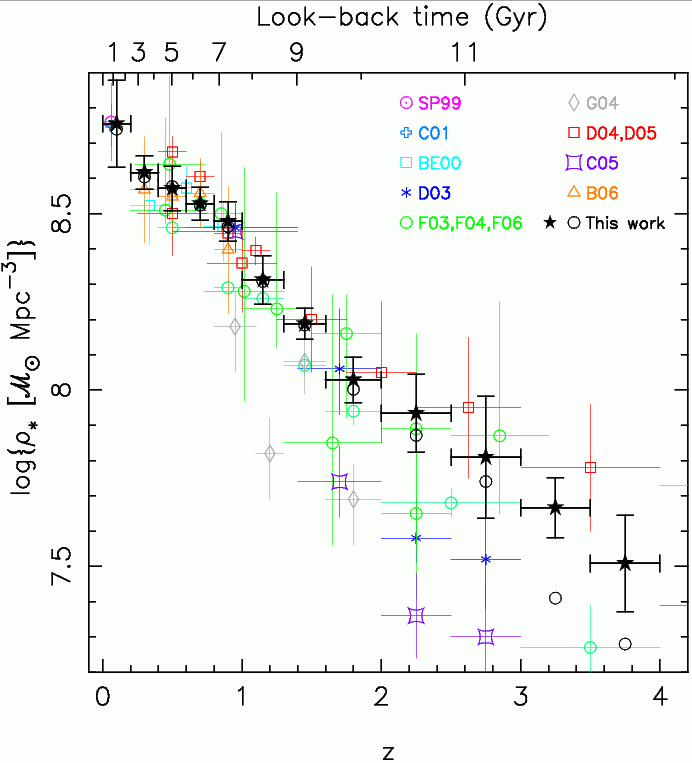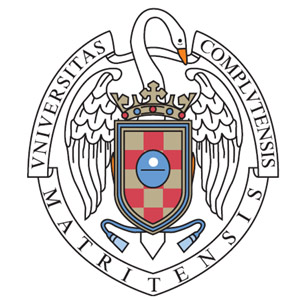

The database includes catalogs and images at x-ray, UV, optical, near-infrared, mid-infrared, far-infrared, and radio wavelengths.
With this database, I studied the evolution of the comoving SFR density of the Universe in the paper Spitzer View on the Evolution of Star-forming Galaxies from z = 0 to z ~ 3.
We have also analyzed the evolution of the comoving stellar mass density of the Universe up to z=4 in the paper The Stellar Mass Assembly of Galaxies from z = 0 to z = 4: Analysis of a Sample Selected in the Rest-Frame Near-Infrared with Spitzer. Here I present the analysis of a sample of 30,000 sources selected in the rest-frame near-infrared up to z~4. This sample has been built with our Spitzer surveys (IRAC and MIPS imaging) of ~665 arcmin2 in the Chandra Deep Field South, Hubble Deep Field North and Lockman Hole. Combining the Spitzer observations with the already available extensive dataset at x-ray, ultraviolet, optical, near-infrared, and radio wavelengths, and comparing those data with stellar population and dust emission models, we study the evolution of the stellar mass function from z=0 to z~4, and the role of luminous infrared galaxies in that evolution. Specific star formation rates are also discussed, establishing constraints on how galaxies formed in the young Universe.
Two of the more interesting plots in that paper are shown above. The first one shows 3 examples of the fits to stellar population and dust emission models used to estimate photometric redshifts, stellar masses, and SFRS for each galaxy in our surveys. On the left column, we show the fits corresponding to a single stellar population characterized by an exponential star formation history. On the right column, we show the same SEDs fitted with 2 populations: an old underlying population and a recent burst.
The second figure shows the evolution of the stellar mass density of the Universe, according to our results (black symbols) and others found in the literature.

